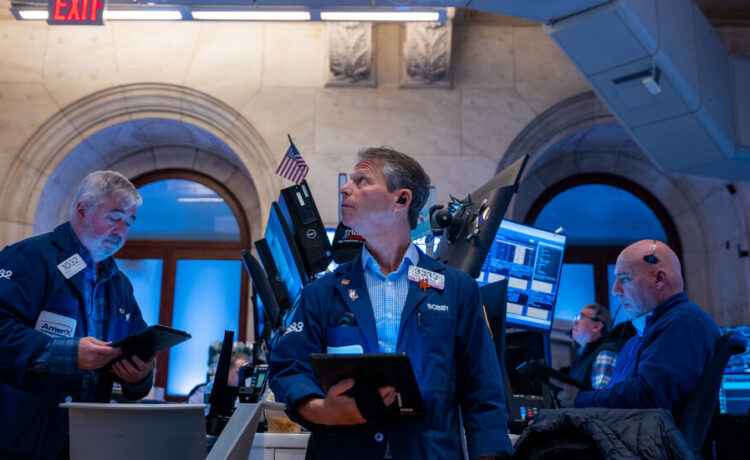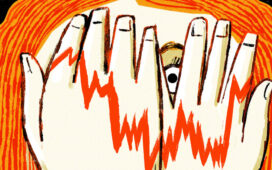Markets were rattled on Friday as the trade war between the United States and China continued to escalate.
The Stoxx Europe 600 index slipped about 1 percent after China raised its tariffs on U.S. imports to 125 percent and then recovered its losses by early afternoon in Europe. Futures trading suggested that the S&P 500 index was set to open slightly higher, reversing earlier losses, at the end of an extremely volatile week.
Markets around the world have veered sharply between large gains and losses amid the turmoil and confusion caused by President Trump’s pronouncements on tariffs. The U.S. dollar and government bonds have also dropped. Analysts at ING said on Friday that there was a “confidence crisis” in the dollar as the U.S. assets lost some of their safe haven appeal.
Beijing’s latest tariff retaliation came after markets closed in Asia. During Friday’s trading session, stocks in Hong Kong rose 1.6 percent, stocks in mainland China rose 0.4 percent and those in Taiwan by 2.8 percent. But Japan’s Nikkei 225 dropped 2.9 percent, catching up to the decline on Wall Street the day before.
All week, markets have been whipped around by the varying intensity and focus of Mr. Trump’s trade policy. Steep “reciprocal tariffs” were imposed on dozens of countries and then, hours later, paused for 90 days. At the same time, Washington and Beijing ratcheted up tariffs on goods traded between the countries.
On Thursday, the S&P 500 index slumped 3.5 percent after the Trump administration clarified that tariffs on Chinese imports were a total of 145 percent, not 125 percent as it had said the day before.
On typical trading days, stock indexes post modest gains or losses, but over the past week, the S&P 500 index has suffered some of its steepest declines as well as its biggest one-day gain since the 2000s.
This week, the VIX index, a measure of volatility known as Wall Street’s fear gauge, rose to levels last seen during the early days of the coronavirus pandemic in March 2020.
The turmoil has extended into a wide range of assets. U.S. Treasuries, which tend to be considered a haven in times of turmoil, have lost value, which has pushed yields higher.
A bond sell-off happening at the same time as declines in stocks and the U.S. dollar has puzzled traders and analysts. Some speculation has focused on whether heavy losses in the stock market have led investors to sell their bond holdings, or whether a foreign central bank is selling U.S. assets.
On Friday, the 10-year U.S. Treasury yield was above 4.4 percent, the highest since February. The value of the dollar, as measured by an index that tracks the currency against major peers, fell about 1 percent, to its lowest level in about 3 years.
“The dollar has also seen a historic weakening,” strategists at Deutsche Bank said, adding that markets are reassessing “how much of the historical premium for U.S. assets stemming from American exceptionalism is still justified under the radical vision and volatile policy of the new U.S. administration.”
The euro climbed more than 1 percent against the dollar on Friday to $1.13. About a week ago it was at $1.09.
“The dollar collapse is working as a barometer of ‘sell America’ at the moment,” analysts at ING wrote. “At this stage, picking a bottom in the dollar is as risky as trying to guess Trump’s next move on tariffs.”





